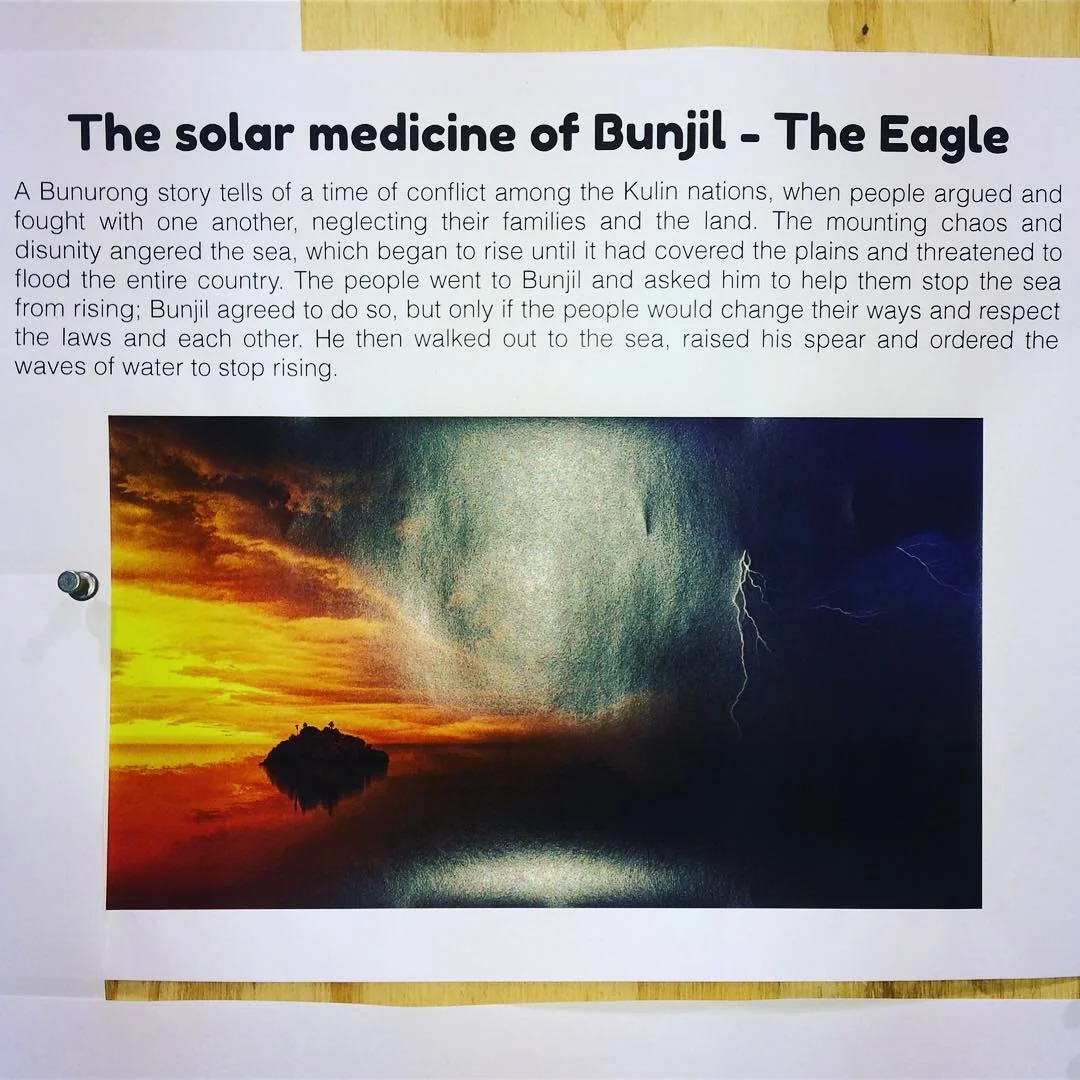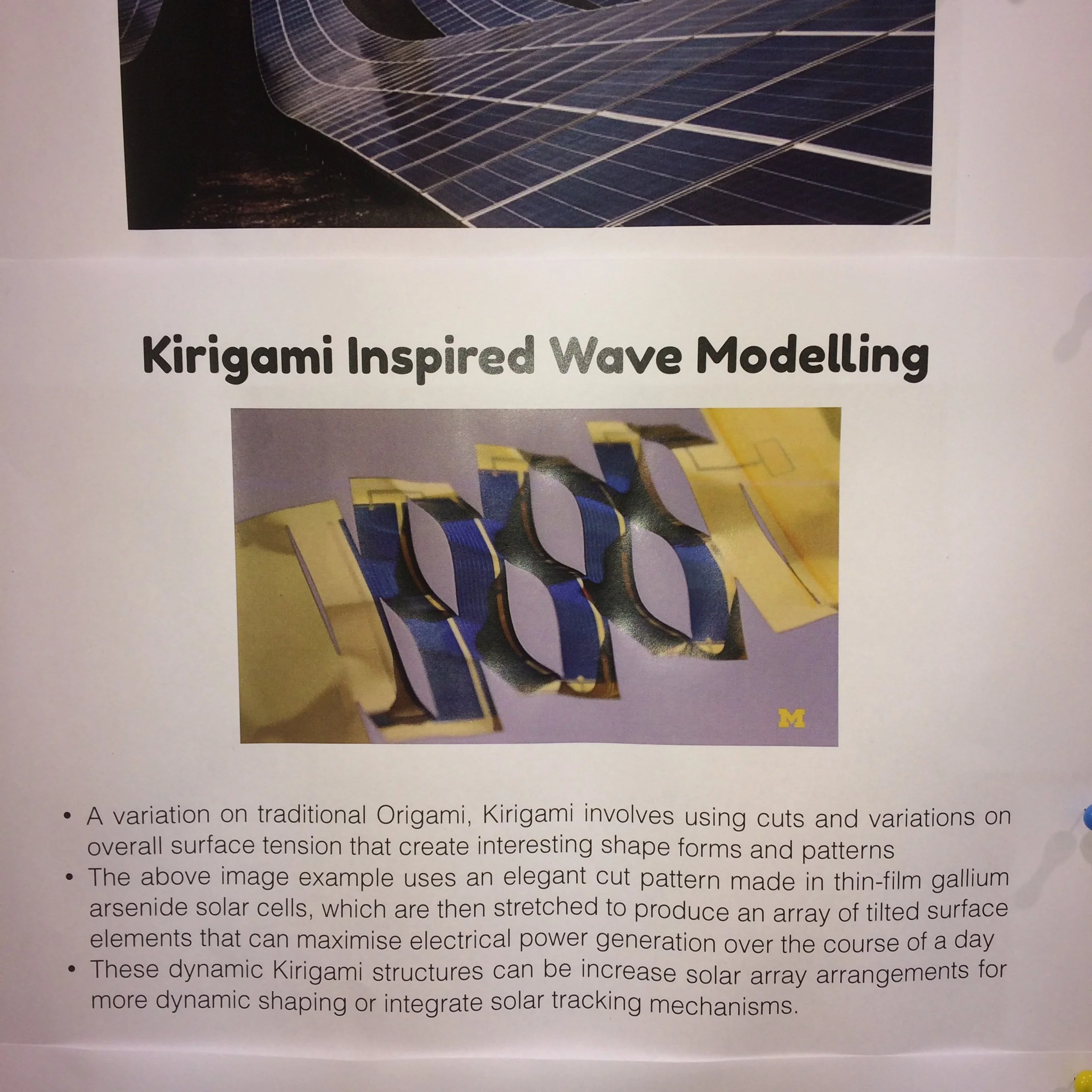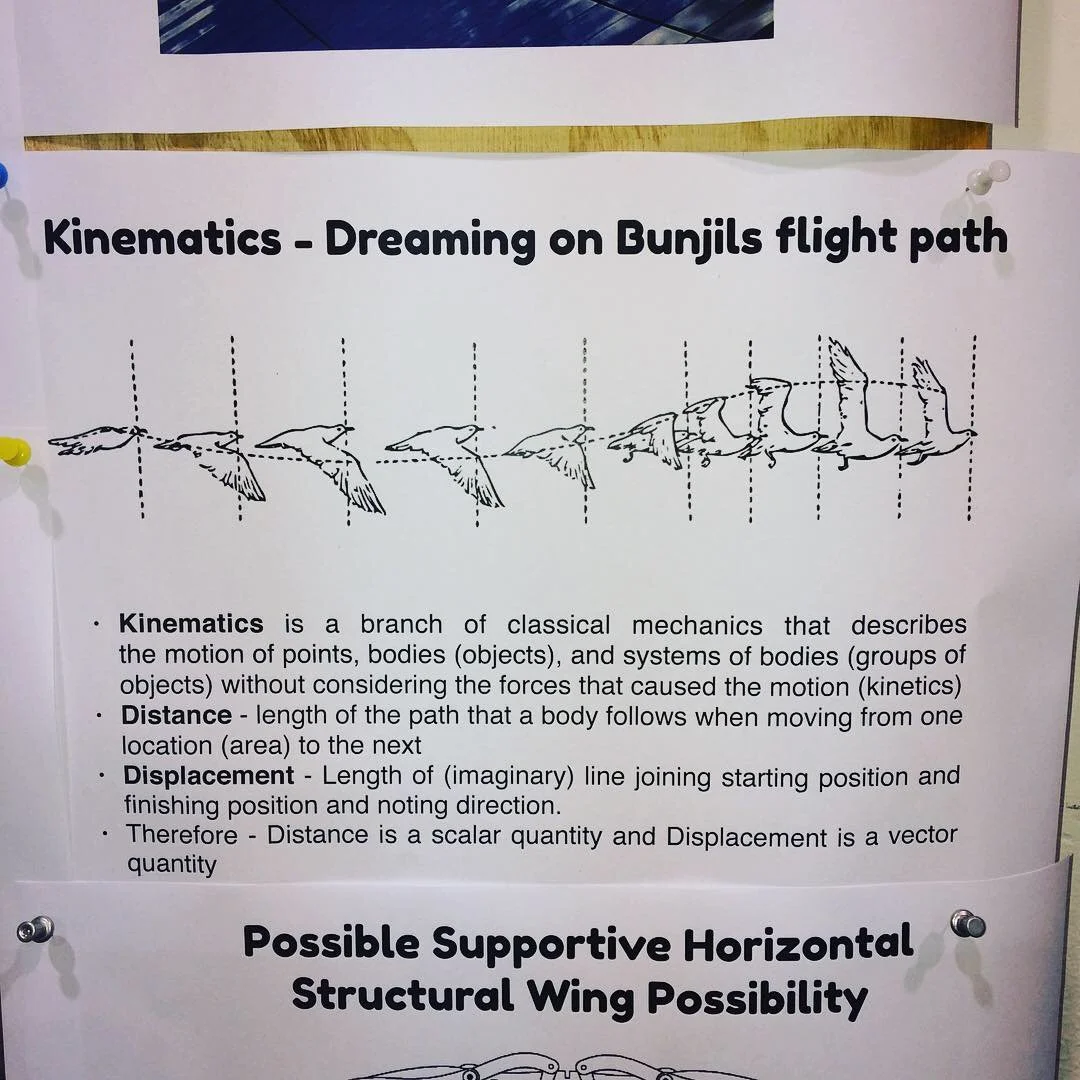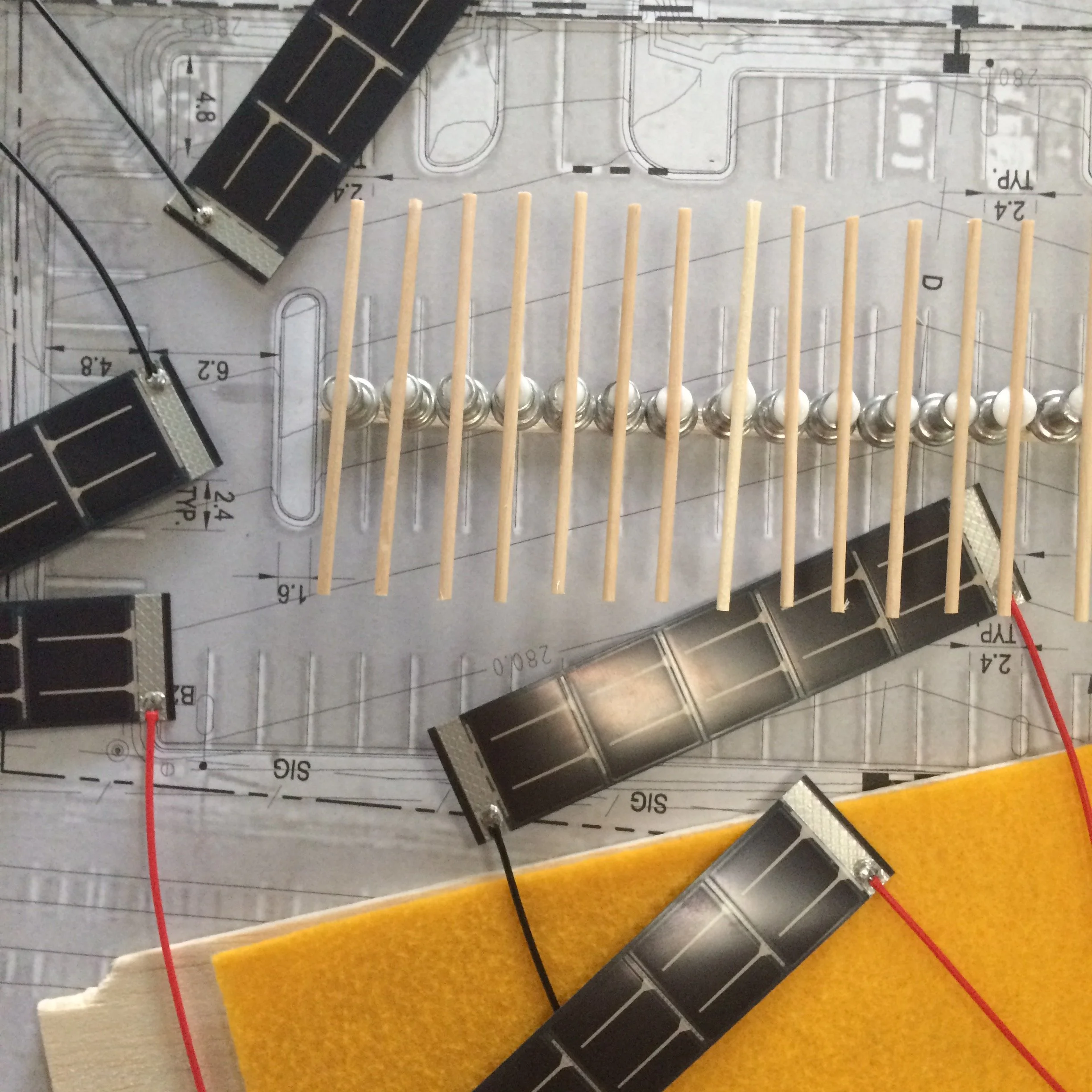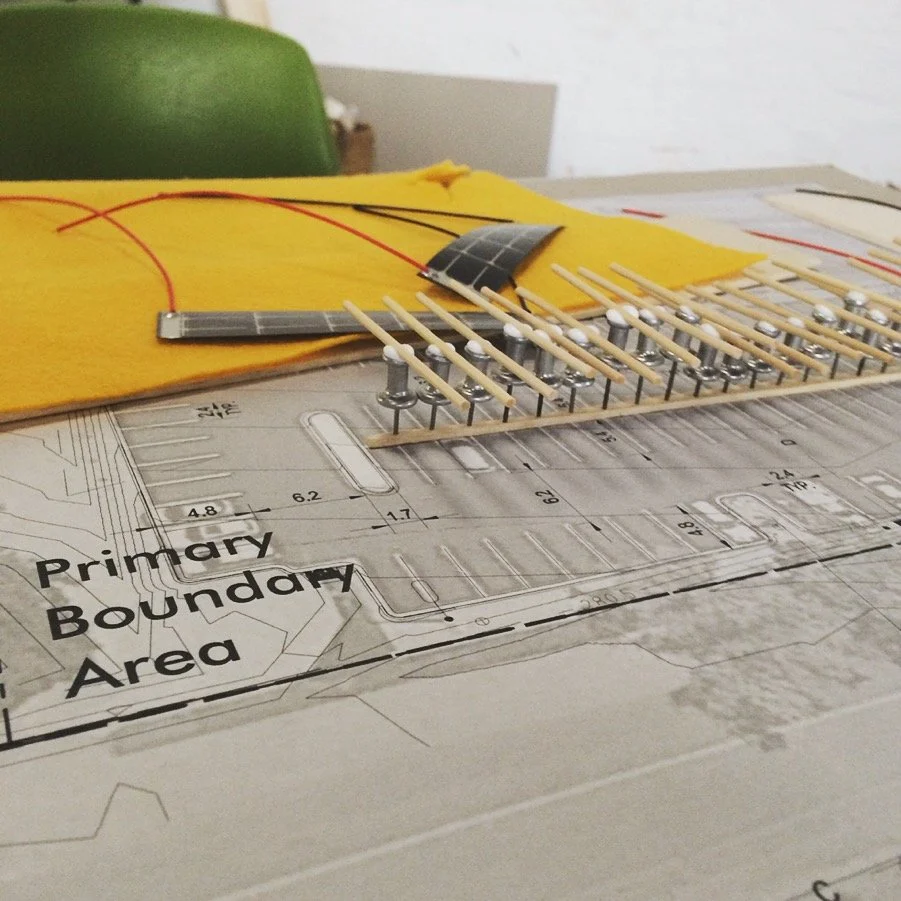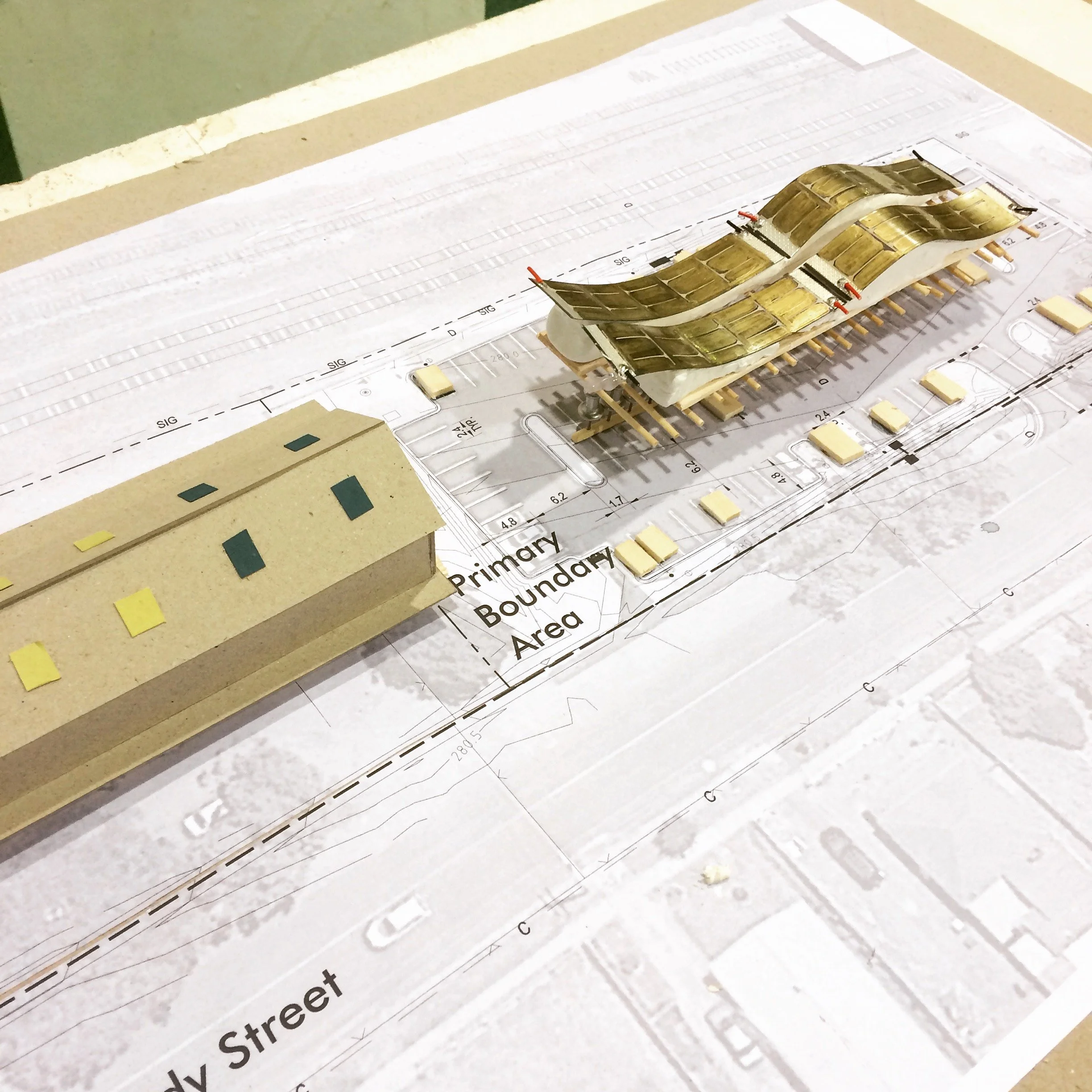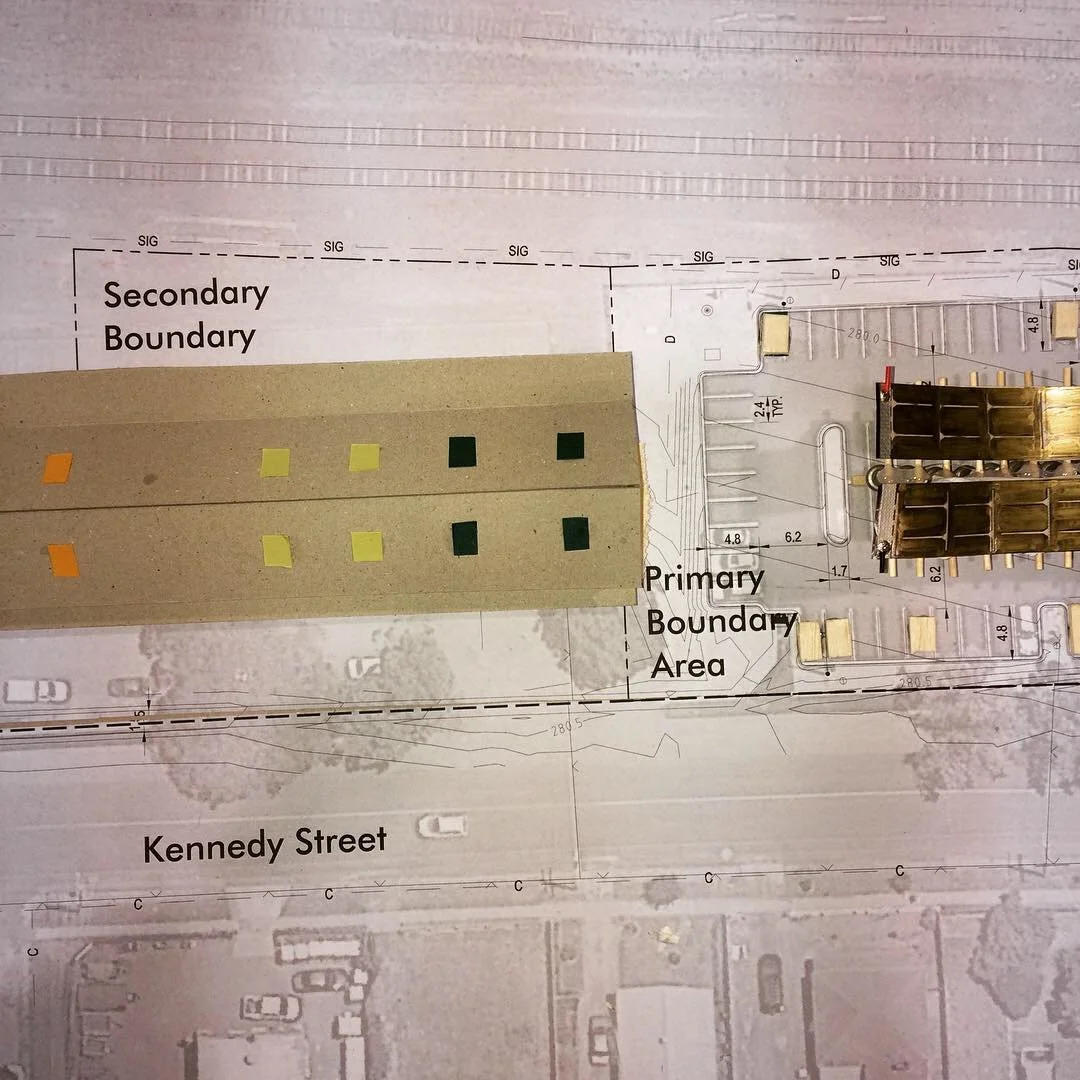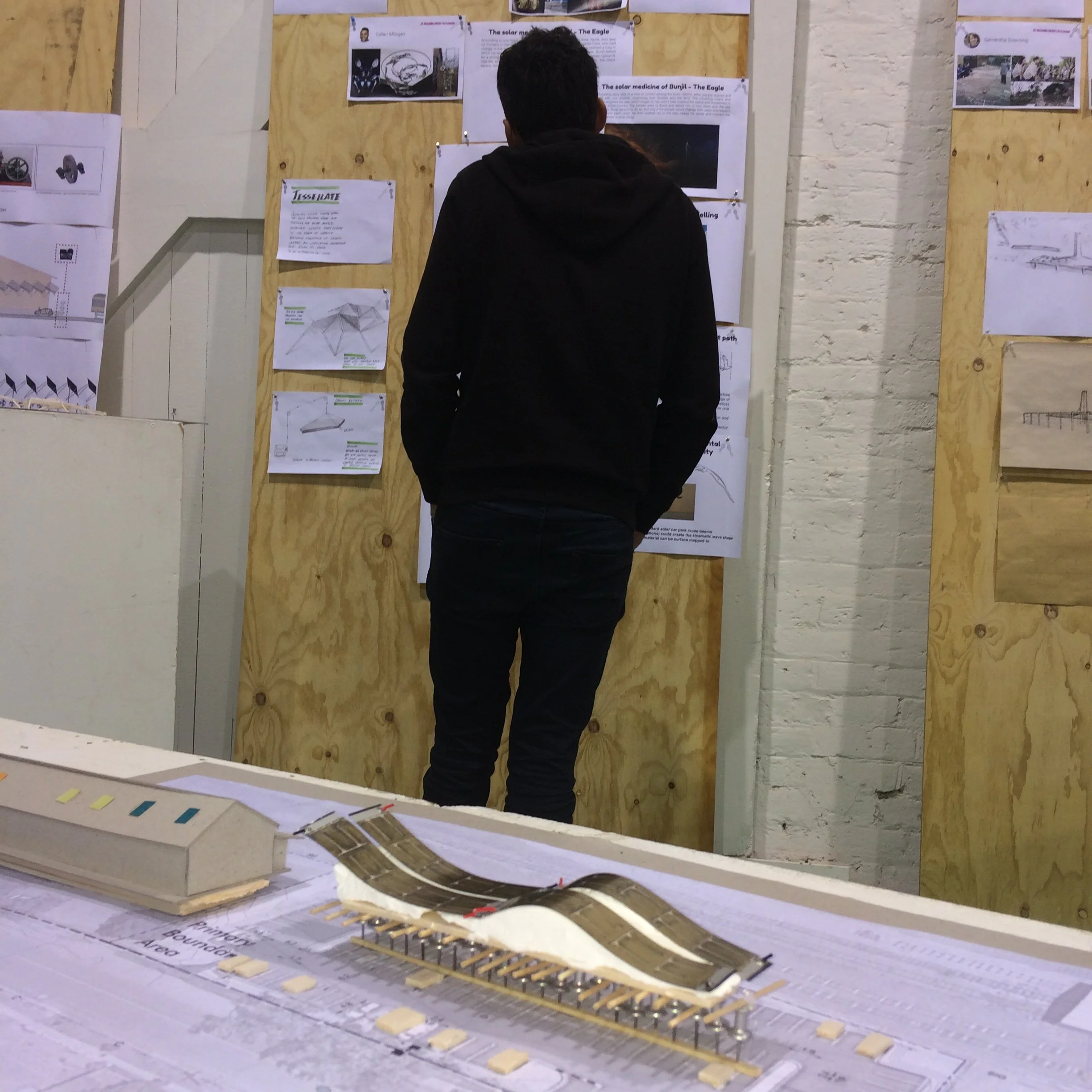








Cy UX Intro
UX / Strategy / Systems
Cy UX Intro
UX / Strategy / Systems
INtroduction
This area of my portfolio showcases an overview of currently featured projects that explore the intersection of responsible industry focused AI innovations, UX/CX, strategic industry design and development and systems. A deeper dive into the projects are present via internal links and can be explored as needed.

Amber: Industry AI CX
Amber: Industry AI CX
XAI (Explainable AI)
CSIRO/RMIT
Amber: Industry AI CX
Amber: Industry AI CX
XAI (Explainable AI)
CSIRO/RMIT
AMBER: Exploring AI/CX/UX Industry Benchmarks
#AI #CX #UX #Industry #Research #Strategy #Project Management
Introduction:
Just before ChatGPT blew up in 2022, I worked as the project design and management lead on collaboration between CSIRO, RMIT and Nurobodi (my startup) in an XAI (explainable AI) design and development sprint using:
OpenAI documentation (Research)
Mural (UX/CX/Interaction/XAI Mapping)
OpenAI Playground API (Prompt/Model Weighting & Temperature/Concept development)
Google Collab (Prototype Design and Dev)
Overview:
Working with seasoned RMIT senior researcher Dr. Lisa Dethridge, CSIRO’s Responsible Innovation Future Science Platform, and Data61 consultants, the myself and my Nurobodi team engaged in the design and development of a very different kind of AI chatbot. Of primary importance was investigating the “ethics” of AI programming in both process and product outcomes. We sought to identify key problems, barriers, and opportunities and to develop ethical solutions while demonstrating human-centered design (HCD), UX, and User Interface design methodologies to generate a low-cost, rapid prototyping of a minimum viable product (MVP).
Project Summary:
The hypothesis with Project Amber explored interdisciplinary research, design and development possibilities to design and fine-tune a base model to interact based on fine-tuned knowledge of international standards for ethics and responsible tech innovations practices. The project sought to foreground the importance of the human in the loop and mindfulness as a mechanic of research, design and development of industry CX standards for responsible and explainable AI applications.
Deliverables:
Research designs and documentation
Working prototype development examples
Present methods for extrapolating foundational research insights
Devise directives for human-AI co-reasoning based on comparisons of base model vs Amber (fine-tuned) outputs
Synthesise recommendations for future research, design and development of strategic industry based XAI integrations
Summarise and present research design and development documentation to RMIT/CSIRO/Data61 analysts
Key Insights:
Despite being a legacy study in GPTs, LLMs and AI in general (2022 is eons ago), this project was, and still is, an extremely innovative and timely interdisciplinary project as well as cautionary tale. As well as its research, design and development deliverables, it highlights the importance of interdisciplinary designers as responsible ‘humans in the loop’, as necessary for ongoing XAI systems integration.
The project also stands as a strong portfolio example that focuses on peak body benchmark research and industry partnerships involving high-level strategic stakeholders invested in co-design and strategic interaction frameworks for the design, development and deployment of responsible and explainable AI (XAI) integrations.

LAGI
Land Art Generator Initiative:
Re-Imagining Castlemaine
LAGI
Land Art Generator Initiative:
Re-Imagining Castlemaine
Re-Imagining Castlemaine
#EnvironmentalDesign #SustainableDesign #CommunityEngagement #InclusiveDesign #CollaborativeDesign #DesignForPlace #DesignLeadership #StakeholderEngagement
Introduction
The Land Art Generator Initiative (LAGI) Re-imagining Energy Castlemaine workshop — was an intensive, three-day charrette that invited local designers, architects and engineers to envision renewable-energy public design-art for Castlemaine’s historic Goods Shed Car Park. This project emerged as part of a larger collaborative design sprint, bringing together local artists, designers, engineers, and community members to reimagine energy futures for Castlemaine. Acting in an advisory capacity, the outcomes of this public exhibition were developed to inform council, stakeholders, and the broader community—offering speculative yet grounded proposals that align sustainable energy generation with cultural, ecological, and place-based values.
Indigenous Wisdom: The undulating form is inspired by the Bunurong story of Bunjil the Eagle—a creator figure associated with wind, flight and the calming of rising seas. The wave geometry tracks Bunjil’s flight path, suggesting motion, guardianship and the cyclical flow of energy.
Design Concept: Replace existing skylights with translucent dye-sensitised photovoltaic (DSC) “wave” panels. By day the kirigami-patterned panels harvest ~5 MWh of solar energy annually; by night they become a programmable canvas for colour-washed LED uplighting and ambient soundscapes synchronized to passing trains and local environmental data.
Technology:
Thin-film DSC or GaAs cells cut into expandable kirigami lattices for passive solar tracking.
Warm-white linear uplights mounted on truss chords for heritage roof wash.
Motion sensors + micro-server to modulate light/sound according to train speed, ambient brightness and community events.
Deliverables
• Concept Deck (A1 boards): Vision, site analysis, kirigami prototypes, Indigenous narrative references, kinematic studies of avian flight Complete & exhibited
• Physical Model (1:200): Cardboard massing with POC interchangeable PV wave modules
• Energy Yield Study: Preliminary DSM sun-path + annual generation estimate (~5 MWh)
• Interactive Light/Sound POC Script: Server-side template for ocean-wave sonification tied to LED fixtures Prototype
• Community Presentation: Public pin-up + Q&A with Castlemaine residents, MASG, VicTrack & LAGI team
Key Insights
• Kirigami ≠ flat panel: Stretch-cut lattices allow PV surfaces to passively tilt toward optimal solar angles without motors—reducing weight and respecting the site’s 9 m height limit.
• Heritage can host high-tech: Warm-white uplighting on weathered timber trusses proved that renewable infrastructure can enhance, rather than compete with, heritage aesthetics.
• Narrative drives engagement: Linking form to the Bunjil creation story anchored the design in local First Peoples’ knowledge, opening dialogue about stewardship and culturally responsive energy futures.
• Multisensory cues matter: Adding a gentle ocean-wave sound bed—synchronised to light intensity—encouraged longer dwell times during user testing, suggesting audio-visual coupling can deepen place attachment.
• Small-scale ≠ small impact: Although the array’s generation covers a fraction of Castlemaine’s demand, its visibility and story-telling potential position it as a catalyst for broader community renewables uptake.

AGILE UX CO-Design
RMIT/REA Group:
Agile UX CO-Design
Workshop Facilitation
AGILE UX CO-Design
RMIT/REA Group:
Agile UX CO-Design
Workshop Facilitation
Agile UX CO-Design Workshop Facilitation
#UX #Agile #REA #Industry #CoDesign #DesignLead #Workshop #Facilitation #Mentoring
Introduction:
As part of an co-facilitated industry based Agile UX workshop between RMIT and REA Group, we explored how Agile methodologies and user-centred design intersect in real-world scenarios. The workshop, co-facilitated with REA’s UX practitioners, was a hands-on, high-energy session designed to simulate iterative sprint design thinking within an Agile framework, while contrasting this with traditional Waterfall approaches.
Overview:
The workshop opened with a crash-course on Agile principles, foregrounding the central question:
"What does Agile really look like — and how does it differ from Waterfall in day-to-day practice?"
With dual projections and real-time facilitation, participants were introduced to these contrasting models. Rather than treating them as abstract frameworks, the session grounded their differences through role-play and UX artefact production, inviting participants to embody Waterfall and Agile mindsets as they progressed through the design stages.
Phase 1: User Understanding & Persona Development:
To lay a strong foundation in user-centred thinking, participants began by sketching quick self-portraits based on partner interviews. While this exercise brought levity and connection, it also introduced key UX research skills:
Empathy building
User observation
Communication through artefacts
These illustrations served as proto-personas, catalysing discussions around behavioural patterns, motivations, and assumptions. Participants began identifying user needs and pain points — critical to shaping meaningful product concepts.
Phase 2: Mapping Agile vs Waterfall UX Workflows:
With personas in hand, teams transitioned into visualising project journeys using both Waterfall and Agile UX models:
Waterfall tracks emphasized linearity: research → design → development → testing → launch.
Agile tracks prioritized iteration: sprint-based cycles where discovery, prototyping, and feedback looped continuously.
These workflows were visualised and acted out — with roles like designer, developer, and stakeholder assigned — to physically embody the pace, rigidity, and flexibility of each approach. This helped clarify how Agile UX supports emergent learning and rapid pivoting based on user feedback.
Phase 3: Paper Prototyping:
In small teams, students translated insights into low-fidelity concepts using paper interfaces. These sketches and mockups served as rapid, testable expressions of early ideas — echoing Lean UX principles:
Test early, test often
Design for outcomes, not outputs
Paper prototypes allowed teams to explore user flows, wireframes, and interface logic before committing to high-fidelity design or development decisions.
Phase 4: Lego-Based 3D UX Modelling:
Building on the paper prototypes, teams moved into tactile prototyping using Lego. This phase invited participants to model their UX concepts in three-dimensional space:
Interface zones became modular blocks
User paths were constructed as physical journeys
Interaction flows became spatialised narratives
This playful-yet-strategic exercise challenged teams to translate abstract digital experiences into tangible, spatial metaphors — deepening their understanding of UX architecture and service touchpoints.
Through collaborative iteration, user needs were mapped physically into 3D systems — bringing together principles of affordance, accessibility, user flow, and hierarchy in unexpected ways.
Insights:
Throughout the session, students practiced not only design ideation but also Agile rituals:
Daily stand-up style check-ins
Retrospectives at each phase
Collaborative role-switching between user, designer, and facilitator
The workshop reinforced that UX is not a phase, but a continuous presence within Agile teams — supporting ongoing discovery, validation, and refinement.
From playful self-portraits to robust Lego ecosystems, the session made space for creativity, critical thinking, and real-world UX agility — all while demystifying how Agile and Waterfall feel when enacted in practice.

VICSEG (UX)
VICSEG New Futures Training:
UX for Digital Asset And
Architectural rebranding
VICSEG (UX)
VICSEG New Futures Training:
UX for Digital Asset And
Architectural rebranding
New Futures Training – Branded Window Design
#EnvironmentalDesign #WayfindingDesign #VisualIdentity #GraphicDesign #BrandingDesign #LargeFormatDesign #SpatialBranding #DesignForPlace #DesignLeadership
Introduction
New Futures Training is the educational and vocational training arm of VICSEG, supporting newly arrived and multicultural communities through pathways into essential community and care sectors. As a registered training organisation (RTO), its mission goes beyond education — it’s about creating equitable access, cultural belonging, and professional opportunity.
This project focused on designing a branded architectural intervention at one of their new Melbourne campuses — not just as a visual identity exercise, but as a collaborative spatial storytelling process. The work extended beyond design execution to become a co-designed act of cultural visibility, welcoming every learner through a threshold that reflects their values, their communities, and their aspirations.
Project Overview
The brief was to design both integrated photo-graphic designs for digital/web as well as large-format branded window treatment that would transform the physical frontage of the campus into a visual interface for care, inclusion, and new beginnings.
Key goals included:
Creating a visually distinct, emotionally welcoming presence that celebrates community diversity
Enhancing public visibility while ensuring students inside feel secure and respected
Establishing visual alignment with VICSEG’s broader identity while expressing the unique role of New Futures Training
Embedding gentle cues of transformation — not just brand marks, but signals of support, momentum, and trust
I led the project across creative direction, visual communication design, and interdisciplinary project management, collaborating with internal teams and external production vendors to realise a concept that was both aesthetically bold and affectively sensitive, all delivered on a tight turnaround schedule.
Deliverables
Large-format, vector-based window mural design, aligned to site-specific glazing layouts
Production-ready files with precise paneling, bleed, and transparency considerations
Visual mockups and environmental elevations for stakeholder co-approval
Digital extensions of the brand treatment for social media and internal learning communications
Full project facilitation, including stakeholder co-design sessions, print liaison, and onsite installation coordination
Key Insights
Co-design deepens resonance — by involving stakeholders throughout, the resulting visual identity felt owned, not imposed
Architectural branding is emotional infrastructure — it tells people they’re welcome before they ever walk inside
Digital and environmental branding must be reciprocal — each strengthens the other when built as one system
This project demonstrates how place-making, visual identity, and human-centered collaboration can intersect to create environments that support not just learning, but becoming

RMIT VX ROBOTICS LAB
RMIT VX ROBOTICS LAB:
Co-Design for Networked
MultiScreen Arrays
RMIT VX ROBOTICS LAB
RMIT VX ROBOTICS LAB:
Co-Design for Networked
MultiScreen Arrays
Empathy Design for Multi-SCreen Arrays
#UX #XR #Interdisciplinary #Strategy #Research #Course Design #SpatialDesign #SystemsThinking #Innovation #ProjectManagement
Introduction:
This project showcases my interdisciplinary capability in pioneering innovative uses of RMIT’s Virtual Experiences Laboratory (VXLab), specifically by integrating technical development of the advanced tiled display technology within the GOV Lab as an immersive distributed yet synchronised collective co-design expression. Collaborating directly with Dr. Ian Peake, Technical Manager of VXLab, I strategically extended the lab’s media capabilities for XR-enriched industry, creative and educational experiences.
Overview:
Collaborating closely with RMIT VX Robotics Lab manager, Dr. Peake, I proposed and implemented novel methods and use case to the VX Lab’s multi-screen array. My role involved agile project management, technical exploration, and effective communication with stakeholders, including students and technical staff. This approach ensured that creative and educational objectives aligned with existing technical constraints, delivering innovative multimedia experiences.
Summary:
The core objective was to explore and maximize the VX Lab's technical and operational capabilities whilst simultaneous utilising the Lab to demonstrate extended design and social context for overlapping pedagogical and industry collaborations.
The outcome was a suite of custom-developed tools and an immersive audiovisual design exhibition, enabling both technical and creative use of the Lab’s multiscreen array. This facilitated unprecedented creative opportunities for students and extended the technical functionality of the VXLab itself to better serve industry relations by demonstrating:
System design and testing research for industry partners with complex combinations of systems, design models and tests
Distributed, collaborative design, prototyping and troubleshooting requiring multiple views of complex data;
Prototyping and development of novel visualisation networking
High resolution and live immersive audiovisual rendering of layered image/colour/sound.
Student UX Affective Design Mapping
Composite Empathy/Identity Testing
Audiovisual Affective Production Design Lecture
Deliverables:
Interdisciplinary Design/STEM strategic project modelling
Interdisciplinary Design/STEM technical/creative design research and course design
Co-Design, development and deployment of custom tools and methods for ultra-high-resolution multi-screen array integrations.
Agile management of student learning pathways and project assets within technical resource limitations.
Innovative integration of advanced A/V technologies into overlapping Design/STEM educational contexts.
Enhanced immersive multimedia learning experiences above and beyond benchmark standard visual practice.
Behind The Scenes:
Key Insights:
This initiative highlights the effectiveness of interdisciplinary and strategic design thinking in navigating resource constraints to innovate educational technologies. It exemplifies how agile project management and effective communication among interdisciplinary teams and stakeholders can foster significant technological advancement and amplify institutional capacity for Design/STEM integrations as a way to meet evolving industry demands and foster creative education and research innovation.

Future Learn: RMIT Blockchain Innovation
Future Learn:
RMIT Blockchain Innovation
& Learning Experience Design
Future Learn: RMIT Blockchain Innovation
Future Learn:
RMIT Blockchain Innovation
& Learning Experience Design
Future Learn: Creative Blockchain Design
#CX #UX #Fintech #Blockchain #Research #Strategy #Course Design
Introduction:
This project demonstrates my capacities with working as a Blockchain and Fintech focused interdisciplinary researcher and designer. User research and experience design focused generating best practice and critically industry informed course design modules as a practical introduction to creative Blockchain applications.
Overview:
Working collaboratively with RMIT Blockchain Innovation Hub I worked autonomously to lead the development of course module materials with emphasis on a smooth user learning experience. The research, design and development focused on providing guidance on simplifying, safely navigating and interacting with complex integrations of Web 2.0 (IP/ISP) and Web 3.0 Fintech (Blockchain) ecosystems.
Deliverables:
My outputs included designing a learning experience that integrated demonstrated design and social context for:
Blockchain-curious learners who wish to satisfy their interest in understanding how underlying blockchain mechanics facilitates the use of digital assets for minting, tokenomics and trading
Game designers and Gamers who wish to understand how blockchain disrupts current models for trading digital assets within game environments
Professional marketers who wish to build applications for creative blockchain campaigns
Promoters who wish to understand and use blockchain for ticketing and credentials
Digital artists who wish to build and sell NFTs of their own artwork
Investors and entrepreneurs who wish to gain financial reward from NFTs
Key Insights:
This project amalgamated a research and design focus on innovative industry and user integration research to design and social context for digital assets. Learning outcomes focused on:
Explain uses and opportunities associated with blockchain and digital asset networks
Understand basic tokenomic structures of fungible and non-fungible tokens
Perform the necessary steps to mint an digital assets to a blockchain
Understand & execute utilities and procedures of blockchain based digital asset mint & transaction
Examine and engage with execution of procedures of IP rights & regulations
Understand integrations of technical and social jargon within Blockchain communities
Identify and interact with an digital asset networks and communities
User Feedback Examples:

Mini Apps
Rapid Prototyping:
UX/UI Mini App for MAC OS
Mini Apps
Rapid Prototyping:
UX/UI Mini App for MAC OS
Mini-App Sprint to Fix Quick Look on Mac
#MicroApplications #DesignThinking #MacTips #LeanDevelopment #CreativeTechnology #EverydayTools
Introduction:
If you’ve ever used a Mac, there’s a good chance you’ve unknowingly relied on a small but incredibly useful feature called Quick Look — ie tap the spacebar on any file and get an instant preview without needing to open it (including auto audio or video play). If you haven't used this shortcut before, you're welcome, if you have used it before, you never want it to go away. It’s the kind of feature that’s so seamless you don’t think about it. Until it breaks. A few days ago, Quick Look stopped working on my Mac. Rather than sweep it under the rug I knew I needed a fix, but the thought occurred to me that most Mac OS users, if the same thing happened to them, either don’t know how, or don’t want to deal with system-level tinkering when something breaks.
Overview:
Instead of typing commands every time, I decided to make a proper, user-friendly mini-app fix that could be shared, for free!
I did a quick design/dev sprint to:
Dig into how Quick Look works
Testing how to safely reset it
Writing and refining a shell script
Designing a simple UX/UI app flow and icon
Test to make sure it worked without Terminal, without setup, and without fuss
Packaging it all neatly into a small Mac mini-app
Host the app for free download for anyone who needs it
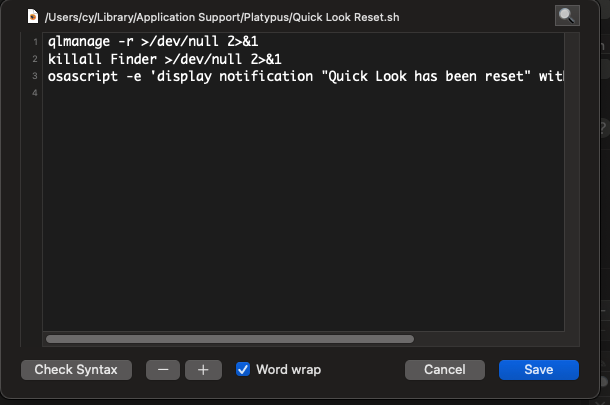
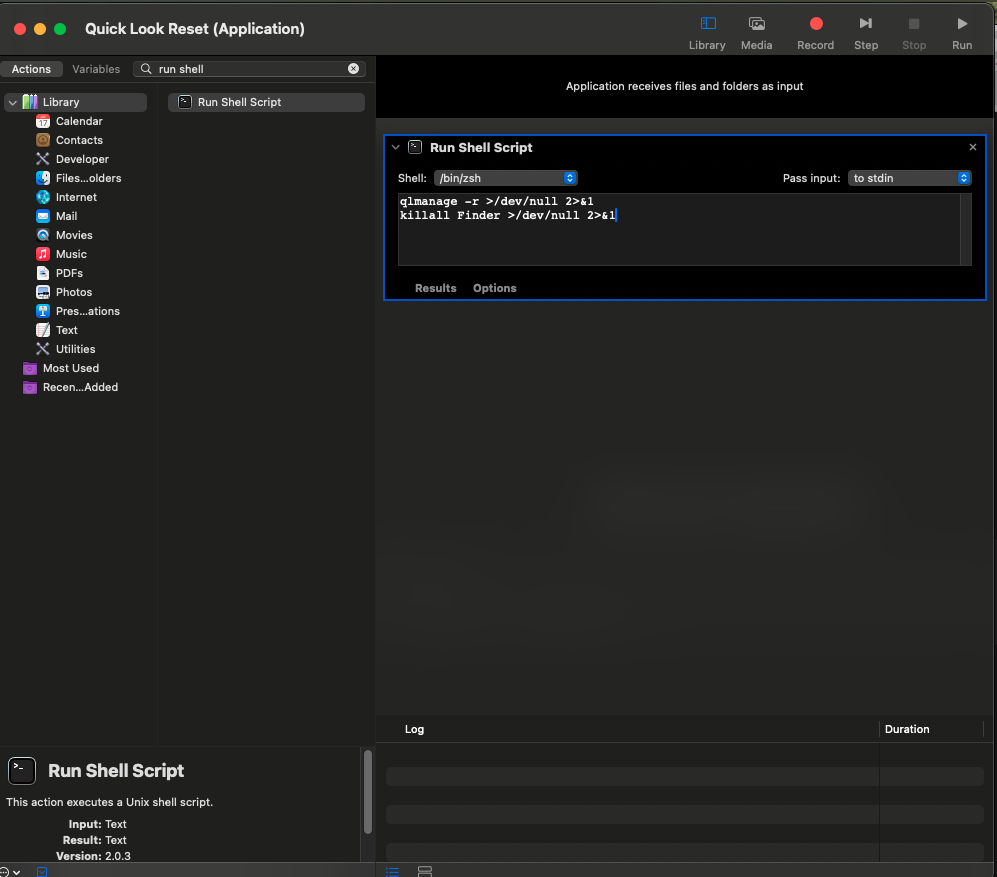


Deliverables:
Quick Look Reset — a small, one-click app that does one thing: It resets Quick Look and restarts Finder, with a clear confirmation message when it’s done.
Key Insights:
Little glitches happen all the time in tech and user experience. And most of the time, they don’t need to be a big deal — they just need to be researched and fixed; quietly and cleanly.
For me, this was an opportunity to turn a small frustration into something useful and shareable as both process and product. It’s the kind of micro-product I believe in — simple, specific, designed to make life a little smoother. It’s also how I approach creative technology and design: Notice what’s broken → design a clean solution → share it.
Want a copy of Quick Look Reset?
If you’d like a copy of the app with no catch, no email, no subscribe, no BS. 💩 You can download the app here, free: 👉 Download Quick Look Reset – Nurobodi















